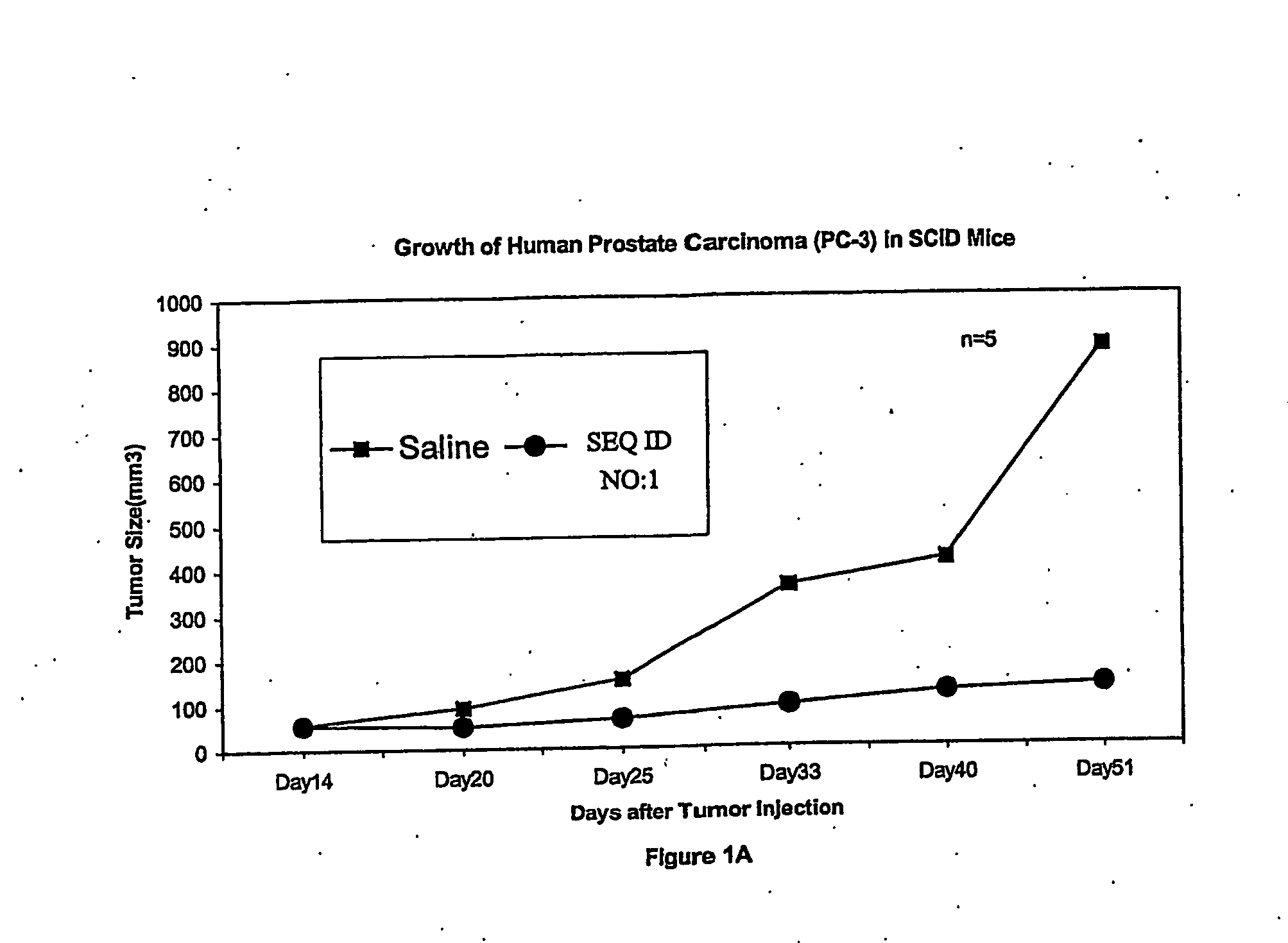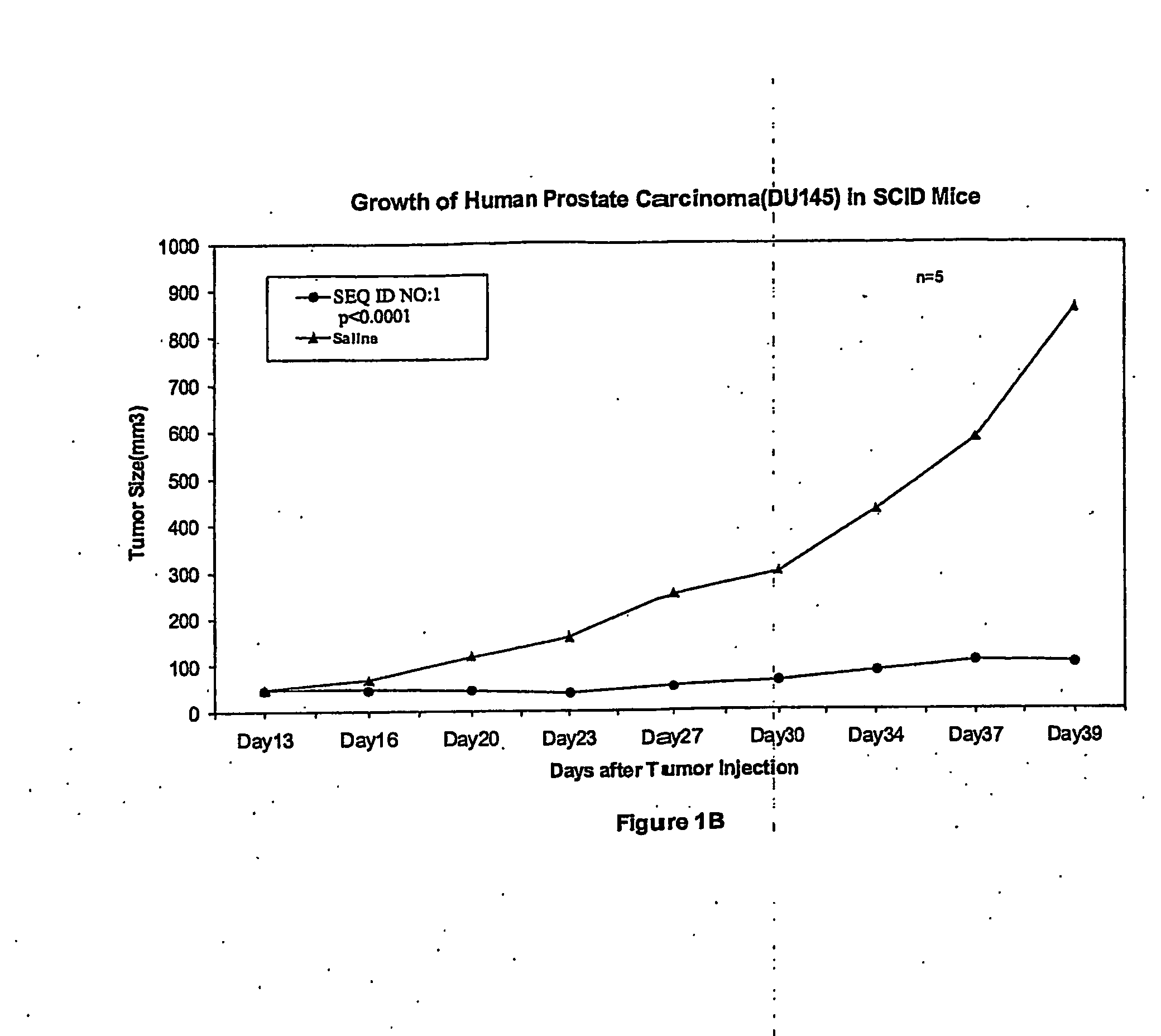Antisense Oligonucleotides Directed to Ribonucleotide Reductase R1 and Uses Thereof in the Treatment of Cancer
a technology of ribonucleotide reductase and antisense oligonucleotides, which is applied in the field of cancer treatment, can solve the problems of ribonucleotide reductas
- Summary
- Abstract
- Description
- Claims
- Application Information
AI Technical Summary
Problems solved by technology
Method used
Image
Examples
example 1
Pharmacokinetics and Metabolism in Animals
[0184] The pharmacokinetics (PK) of SEQ ID NO:1 (and related oligonucleotide metabolites) were determined in rats and monkeys after single intravenous bolus injections of SEQ ID NO:1 at escalating doses. In addition, the toxicokinetics and / or tissue distribution of SEQ ID NO:1 (and related metabolites) were determined as part of acute (24-hour) and repeat dose (14- and / or 21-days) continuous intravenous infusion toxicity studies in both rats and monkeys. The plasma and tissue analyses were conducted by an appropriately validated (and cross-validated) capillary electrophoresis (CE) method.
1.1 Absorption Pharmacokinetics in the Rat
[0185] Groups of Sprague-Dawley rats were administered single intravenous bolus injections of the SEQ ID NO:1 at doses of 10, 25 and 50 mg / kg (59, 147.5, and 295 mg / m2). In each dose group, blood samples were collected from the animals (2 rats / sex / timepoint) at 5, 10, 20, 30, 45 min, and 2, 4, 8 and 24 h post dos...
example 2
Toxicology Studies
2.1.1 Acute Intravenous Toxicity Study of SEQ ID NO:1 in Rats
[0197] The purpose of this study was to assess the adverse effects of SEQ ID NO:1 when administered as a single intravenous dose to Sprague-Dawley rats. In this study, four groups of animals (3 / sex / group) were administered SEQ ID NO:1 by continuous intravenous infusion for 24-hours at escalating doses. Subsequent dose levels were incrementally escalated as follows when toxicological effects were not observed at the 40 mg / kg / day dose: 60, 80 and 90 mg / kg. Parameters assessed included mortality, clinical observations, body weight and food consumption assessment, clinical pathology and urinalysis measurements, and gross examination at necropsy.
[0198] The results indicated some test article related effects were found in animals that received doses of 60, 80 and 90 mg / kg.
2.1.2 Acute Intravenous Toxicity Study of SEQ ID NO:1 in the Monkey
[0199] The objective of this single, dose...
example 3
Effects of SEQ ID NO:10N PC-3 Prostate Tumor Growth in SCID Mice
[0208] PC-3 human prostatic cancer cells (1×107 cells in 100 μl of PBS) were subcutaneously injected into the right flank of 6-7 week old male SCID mice. After the tumor size reached an approximate volume of 50 mm3, 14 days post tumor cell injection, SEQ ID NO:1 was administered by bolus infusion into the tail vein every other day at 10 mg / kg. Control animals received saline alone for the same period. Treatments lasted for 36 days thereafter. Antitumor activities were estimated by the inhibition of tumor volume, which was measured with a caliper on six different occasions over 36-day period. Each point represents mean tumor volume calculated from 5 animals per experimental group. As illustrated in FIG. 1A, SEQ ID NO:1 treatment demonstrated strong inhibitory effects on the growth of human prostate carcinoma.
[0209] DU145 human prostatic cancer cells (1×107 cells in 100 μl of PBS) were subcutaneously injected into the r...
PUM
| Property | Measurement | Unit |
|---|---|---|
| concentrations | aaaaa | aaaaa |
| median time | aaaaa | aaaaa |
| time | aaaaa | aaaaa |
Abstract
Description
Claims
Application Information
 Login to View More
Login to View More - R&D
- Intellectual Property
- Life Sciences
- Materials
- Tech Scout
- Unparalleled Data Quality
- Higher Quality Content
- 60% Fewer Hallucinations
Browse by: Latest US Patents, China's latest patents, Technical Efficacy Thesaurus, Application Domain, Technology Topic, Popular Technical Reports.
© 2025 PatSnap. All rights reserved.Legal|Privacy policy|Modern Slavery Act Transparency Statement|Sitemap|About US| Contact US: help@patsnap.com



